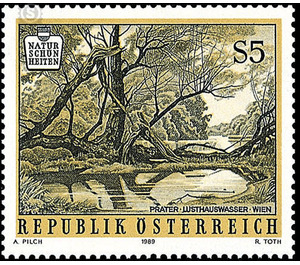nature - Austria / II. Republic of Austria 1989 - 5 Shilling
Theme: Architecture
| Country | Austria / II. Republic of Austria |
| Issue Date | 1989 |
| Face Value | 5.00 |
| Color | brown |
| Printing Type | combination printing |
| Stamp Type | Commemorative |
| Item Type | Stamp |
| Chronological Issue Number | 1311 |
| Chronological Chapter | OOS-OE2 |
| SID | 749124 |
| In 59 Wishlists | |
The precious green space "Prater" in the middle of the city of Vienna looks back on a rich tradition. Its oldest mention can be found in a document issued on 2 July 1162 in Bologna document of Frederick I, in which an allod "quod dicitur Pratum" the "Conradus, qui dicitur Prato" gives. In the following times, monasteries, religious orders and various lordships possessed parts of the Prater as fiefs. In 1560, Maximilian II set about obtaining a conveniently located hunting area from their landlords through the dissolution of these reasons. The Prater was subject to this exclusive hunt until the time of Emperor Joseph II, who broke with tradition and made the Prater generally accessible through the Avertissement of April 7, 1766. A milestone in the history of the Prater was certainly the 1873 World Exhibition, of which two more pavilions have survived. The regulation of the Danube Canal (1832) and the great regulation of the Danube (1870-1875) probably shaped the appearance of today's recreational area most decisively. The Prater with its embedded Lusthauswasser, which also shows the brand motif, is home to countless animals and plant species that have found a living space in the Green Heart of Vienna.


